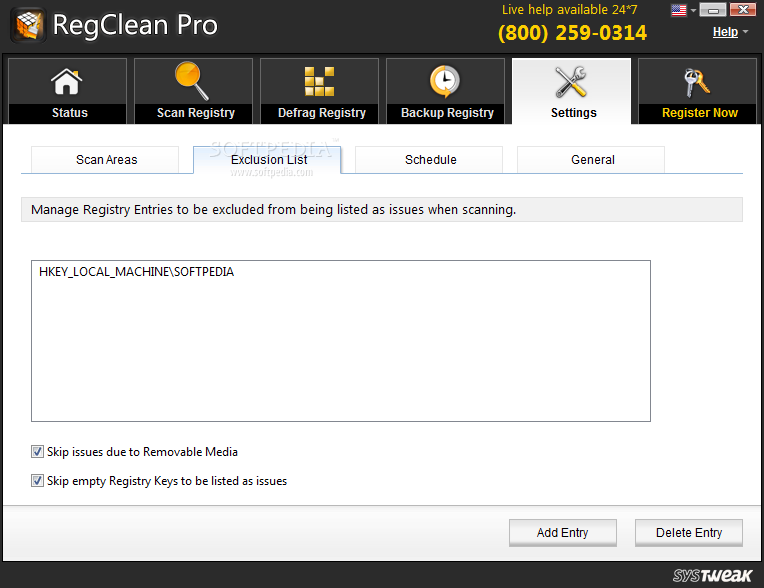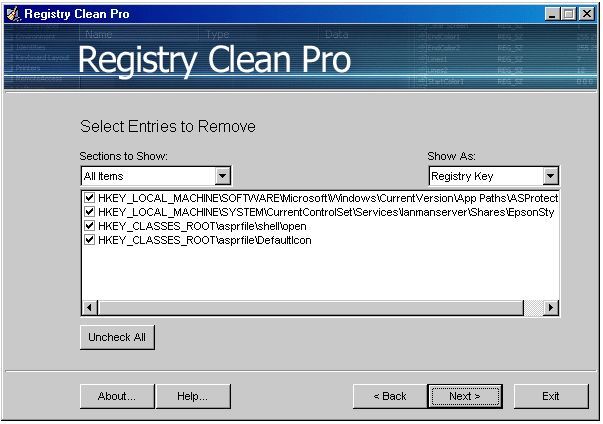

- #Reg pro clean how to#
- #Reg pro clean install#
- #Reg pro clean Offline#
- #Reg pro clean windows 8#
- #Reg pro clean professional#
Registry Tool obeys ALL NT/2000/XP/2003/Vista/2008/ security protocols and relies solely upon the standard NT/2000/XP/2003/Vista/2008/ authentication system. Registry Tool does not use drivers, hooks, shell extensions, or RegEdit extensions, and will not slow down Windows.
#Reg pro clean Offline#
Registry Tool analysis and search commands operate on the Registry Tool Database offline of Windows, leaving Windows protected and secure. Registry Tool operates OFFLINE by importing the Windows Registry creating a safe stand-alone Registry Tool Database file independent of Windows. Registry Tool Personal will import a Dat or Hive binary file and edit it only during the import process and resulting display.
#Reg pro clean professional#
Registry Tool Professional will load and edit a binary file across a network, and will load a Dat or Hive Binary file at any time, regardless of import type, and during the opening of any Registry Tool Database. Repair a registry hive file from a non-booting machine, another partition, send settings from one installation or partition to another, use Search and Replace, Search and Delete, Search, scan, diagnose, clean, optimize and compact the Dat/Hive binary file.


Registry Tool edits, restores, rebuilds, repairs, and cleans binary Dat/Hive Registry files using an array of advanced features.
#Reg pro clean windows 8#
Registry Tool is a centralized OFFLINE Windows registry editor and Windows registry editor utility capable of remote registry administration, registry repair, maintenance, analysis, cleaning, compare, and recovery / restore operations on the Windows 95 registry, Windows 98 registry, Windows ME registry, Windows NT 4.0 registry, Windows 2000 registry, Windows XP registry, Windows Vista registry, Windows Server 2003 registry, Windows Server 2008 registry, Windows 7 registry, Windows 8 registry, and Windows server 2012 registry.
#Reg pro clean how to#
There you have it, friends, this is how to clean your registry, both manually as well as by using a specialized tool. Step 5Īs an alternative, you can press Ctrl + F and type the name of the item that you're looking for instead of manually scrolling through the registry entries. Select the entry you no longer want and press the Delete button on your keyboard. Leftovers from removed applications are generally located in HKEY_CURRENT_USER -> Software. Use the left-side pane to navigate to the entries that you want to clean. This is very important: create a backup by going to File-> Export, giving a name to your backup file, checking All in the Export range section and clicking on Save. Pres Win + R, on your keyboard type regedit in the box that opens up and hit Enter or the OK button. In case you're interested here's how you can do this: Step 1 Wait for the scan to complete, then select the problems you want to fix or leave them all checked and click on Fix selected Issues.Īs I said in the beginning, you can also clean the registry by yourself however, the process isn't only complicated even for advanced users, but also very time-consuming. Select the registry sections that you want to be verified or leave all the boxes checked and press the Scan for Issues button. Run the application and click on the Registry button from the left-side pane.
#Reg pro clean install#
(Make sure to remove the check mark from the Install Avast antivirus box during the process.) Step 2 Here's how to use it: Step 1ĭownload CCleaner, double-click on the setup file and follow the instructions to install the application on your PC. The tool does its job very well and it's free, which is equally important. As far as choosing the right registry cleaning application goes, there are plenty that can do the job, but in my experience I found CCleaner to be one of the best solutions available. Of course, like any program, it can have flaws from time to time, but humans make just as many errors and it will save you a lot of time. The quickest and usually safest way to clean the registry is to use a specialized tool. Unfortunately, even experienced users have a hard time dealing with these issues manually, so if you want to learn how to clean the registry, you will need a whole lot of patience or a specialized tool. In fact, most of the problems and errors that you have to deal with when using Microsoft's operating system stem from the system registry files. A while back we've showed you how to fix DLL Not Found errors, but that's not the only problem you'll encounter while using Windows.


 0 kommentar(er)
0 kommentar(er)
